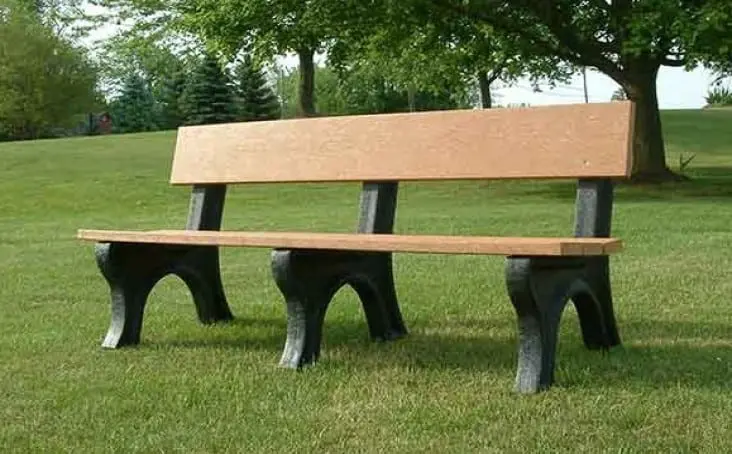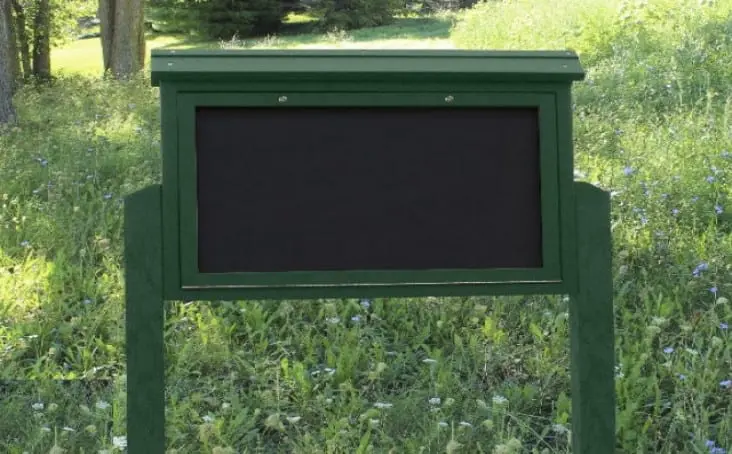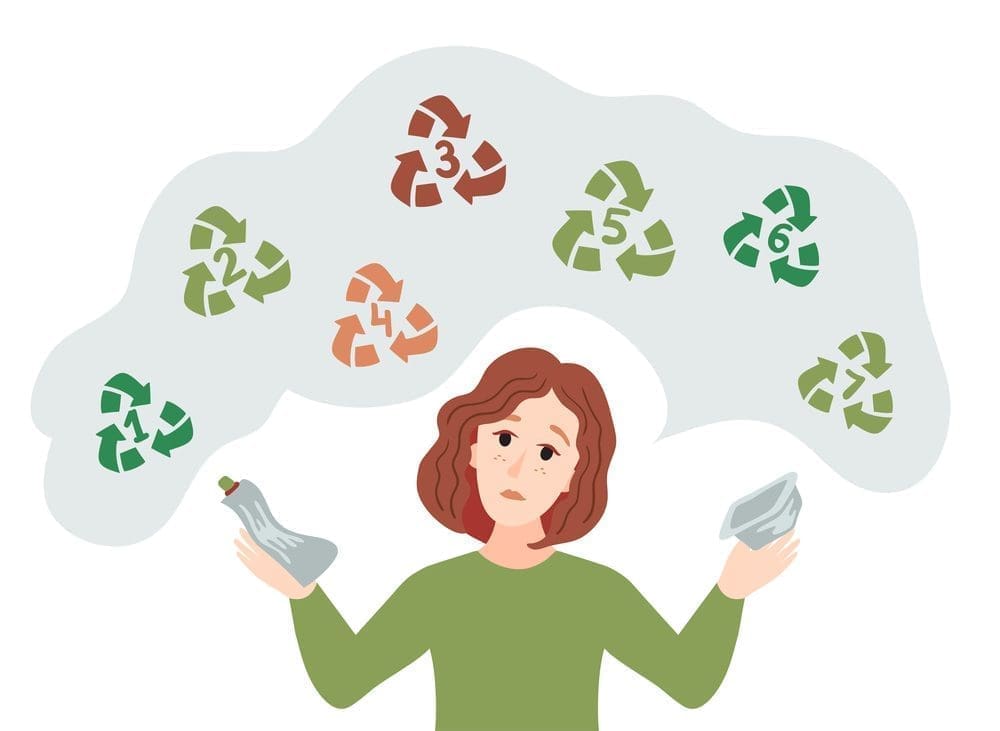

Most people by now are familiar with the symbol for recycling—the triangle made of three arrows. However, what many still don’t comprehend are the numbers that you see in the middle of the triangle on plastics. Most just assume that if a product has the recycling symbol on it, it is reusable and can be recycled, but this isn’t true.
The numbers you see inside the recycling symbol indicate what type of plastic the product is made from, and not all plastics are easily recyclable, even if they have the triangle symbol. These symbols and numbers act more like a code to help people know what the material is and its recyclability and reusability, as some plastics are meant for single-use, and not all are accepted at certain recycling facilities.
Unfortunately, because most people don’t fully understand plastic numbers, they often buy products made or packaged in plastics that cannot be recycled, or they simply don’t know how to properly recycle the product. This is a significant problem because plastics that do not get properly recycled end up in landfills or polluting natural environments. For this reason, it’s crucial to understand plastic numbers so you can choose products made from recyclable plastics and know how to recycle them.
#1 PET
Plastic #1, also known as polyethylene terephthalate, is one of the most commonly used types of plastic. You will typically find this symbol on items like beverage and water bottles, food containers, and mouthwash bottles, and it is typically clear plastic. PET is safe for use in food and drink packaging; however, this plastic is not intended for multiple uses as it can break down over time and leach harmful substances.
After one use, PET products should be recycled. It is a widely accepted plastic at most recycling facilities and can be reprocessed to use in new bottles, or it can be turned into polyester fiber and used for clothing, carpets, and other materials.
#2 HDPE
HDPE, or high-density polyethylene, is another commonly used plastic that is considered one of the safest. It is often opaque in color and has a high strength-to-density ratio, meaning it does not wear down easily and can be used for sturdier products. Many products are made with this plastic, such as toys, pipes, cosmetic and household cleaner bottles, bags, automotive parts and even outdoor furniture because it is durable and versatile.
You can easily reuse products made of HDPE because of its strength and resistance to wear, and it is also accepted at most recycling facilities. It’s also much more cost-effective to recycle, process, and reuse HDPE for making new products than it is for other materials.
#3 PVC
Plastic #3, polyvinyl chloride, is widely used like PET, but it is considered toxic. It is one of the least accepted plastics at recycling facilities but can be recycled several times using chemical or thermal recycling processes. It can be both rigid or made flexible by adding plasticizers. It’s not considered safe for food packaging but is very common in construction materials, such as piping, electric cables and flooring. Flexible PVC is also used to make clothing such as coats, shoes and skiing equipment because of its weather-resistant qualities and is also made into artificial leather.
It is generally best to use PVC or to buy products made with PVC as little as possible. Though some PVC products can be up-or-downcycled and used for other purposes, it is generally not considered recyclable at most municipal recycling facilities.
#4 LDPE
LDPE, also known as low-density polyethylene, is generally considered a safe plastic as it is much less toxic than other plastics. LDPE is a reusable thermoplastic that is often used for packaging foam, trays, containers, and plastic food wraps but is best known for being the plastic used to make plastic shopping bags and films. Though some plants and facilities are starting to accept rigid LDPE, packaging foam it is not widely accepted just yet and plastic shopping bags wreak havoc in a recycling facility. The bags get tangled in sorting machinery causing shut-downs that require dangerous removal by hand by employees. NEVER throw them in the trash because they become airborne and end up in the environment. Retail facilities that use the bags often have receptacles in their vestibule where you can deposit bags for recycling. Until recycling of LDPE becomes more commonplace, it should be used sparingly.
#5 PP
Polypropylene is plastic number 5 and is the second most commonly produced and used plastic next to PET. It is a food-safe and heat-resistant plastic, so it is often used for microwavable products as well as bottle tops, kitchenware, disposable dinnerware, diapers, cereal box liners, yogurt cups, chip bags, straws, and medicine containers. Polypropylene is recyclable, but not all facilities accept it although its acceptance is growing. Only about 3% of number 5 plastics get recycled in the U.S., so it is best to reuse PP products as much as possible.
#6 PS
Plastic number 6, polystyrene, is well known as the Dow brand name Styrofoam. It is lightweight, easy, and cheap to produce and can be formed into many shapes and sizes. Unfortunately, because this material is weak and lightweight, it breaks down easily and pollutes the environment. It has also been known to leach harmful chemicals into food despite being used for disposable drinking cups and foam plates, egg cartons, and to-go containers. You’ll also find it as EPS or expanded polystyrene, often used as protective foam in cartons and disposable coolers. It’s recognizable as small foam balls compressed together into shapes. This is extremely detrimental to the environment because the foam balls easily break apart and then spread far and wide through the air and water.
This plastic is also not easily recycled, so it often ends up in landfills and polluting natural environments. While some businesses try to recycle and reuse polystyrene, it is generally not very reusable because it breaks down so easily. Thus, PS is another plastic that people should avoid using if they can.
#7 Other
Plastic number 7 is used to identify all other plastics that do not fit into the other categories. This includes mixed plastics and bioplastic, but most often, #7 is made of polycarbonate (PC), which contains highly toxic BPA (Bisphenol A). Though companies are now trying to avoid using plastic #7 with BPAs, it is still widely used for things like water bottles, baby bottles, lids, and dental equipment. BPAs have been linked to numerous health problems, so watch labels and steer clear of #7 plastic.
Generally, products marked with #7 and PC should be avoided, even if they say they do not leach BPA because they likely still contain small trace amounts of BPA. Though some newer and safer plastics can fall into this category, #7 plastics are generally not reusable or recyclable, so they should be avoided if possible.
The Polly Products Difference
At Polly Products, we maintain the highest standards for ecological conservation in both our business practices and our product development. Our products are made of 100% recycled HDPE plastic which is safe, reusable, and recyclable. All scraps from production go back into our feedstock, and we pay for the shipping to return parts to our facility, so they don’t end up in landfills. Furthermore, our products use zero formaldehyde, which can be found in other recycled plastic products, and we offer a 20-year warranty that beats out most competitors.
Located in rural Michigan, we proudly supply environmentally responsible outdoor furniture, 100% made and assembled in the USA. Check out our website for more information about our products and how Polly Products is making a difference.








